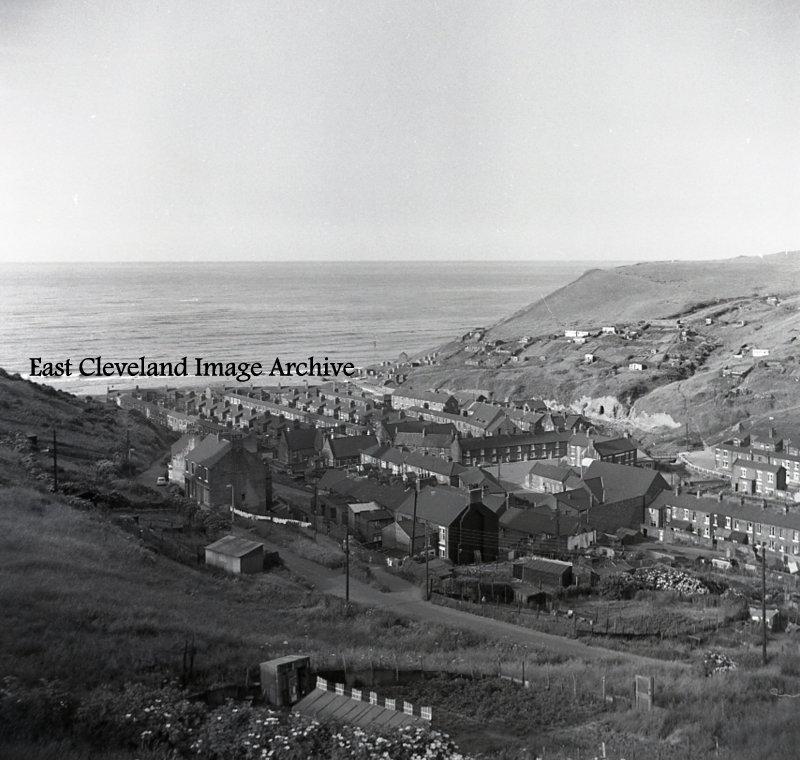
Looking over Skinningrove village towards the sea in June 1964.
Image courtesy of Ken Loughran.
|
|
||
 Looking over Skinningrove village towards the sea in June 1964. Image courtesy of Ken Loughran. 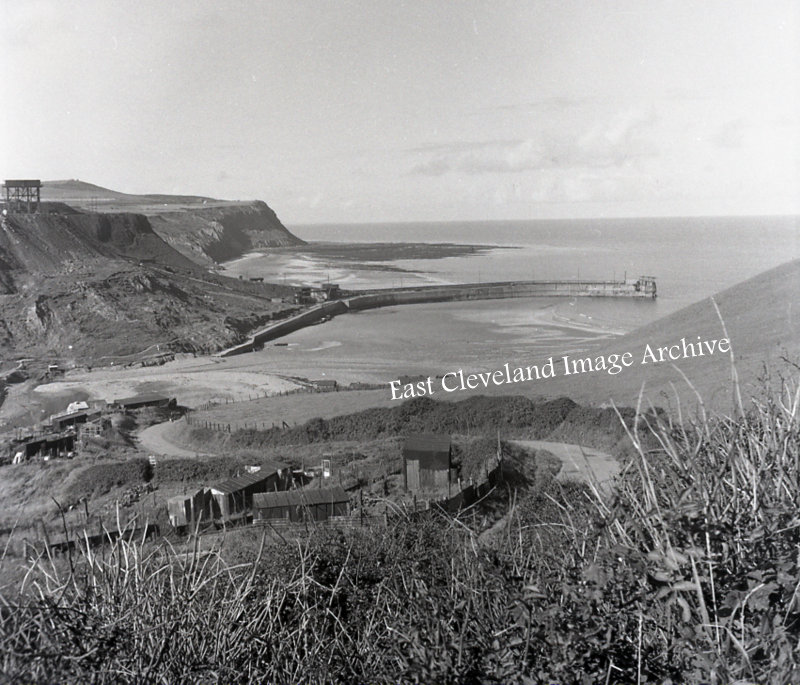 A fine view of the bay and jetty, sometime in the 1960s. Norman Patton tells us: ”My instincts tell me that this photograph was perhaps taken in the 1950s. I am sure that the “promenade” was built of large blocks and for a while we had a comfortable walkway until soon afterwards when the sea destroyed the hard work. A youngster was washed into the sea and drowned whilst clambering on the fallen blocks. If my assumptions are correct, that tragedy would have occurred around 1957?” Can anybody assist further with this detail? Image courtesy of Ken Loughran and thanks to Norman Patton for the update. 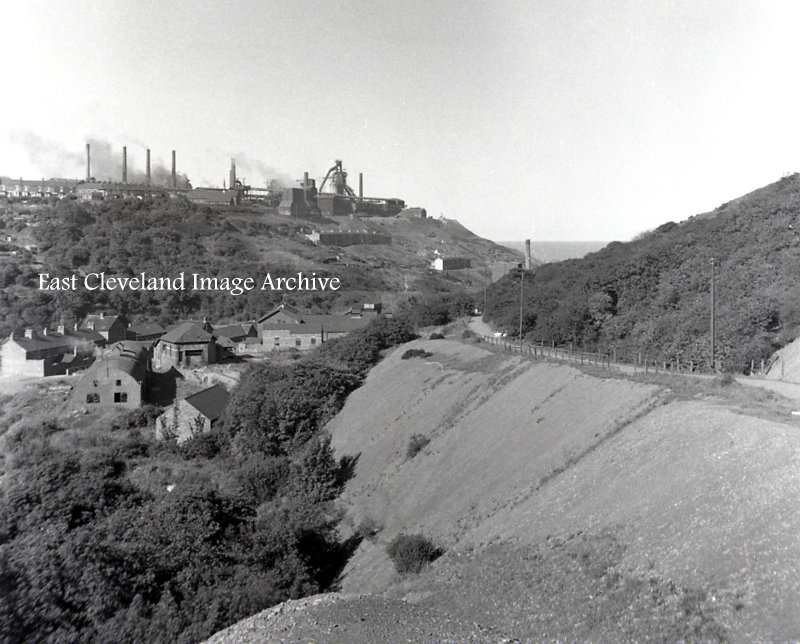 Deepdale Road, built on the side of the shale heap from Loftus down to Skinningrove. The mine is to the left in the valley; the works on the hill and the chimney of the gasworks in the centre of this image. Image courtesy of Ken Loughran. 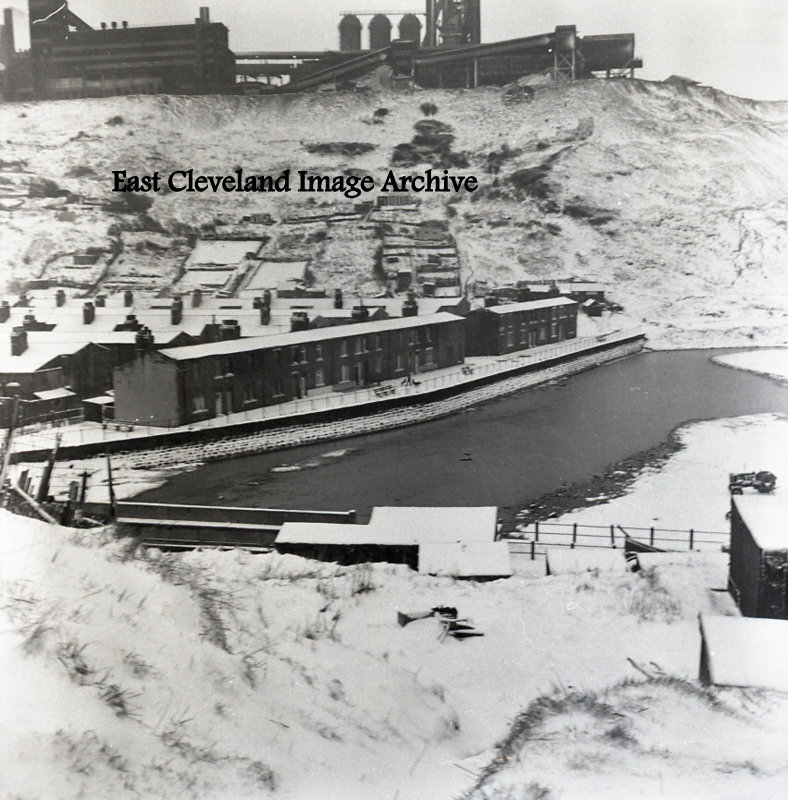 Skinningrove, with Marine Terrace basking in the snow! Image courtesy of Ken Loughran. 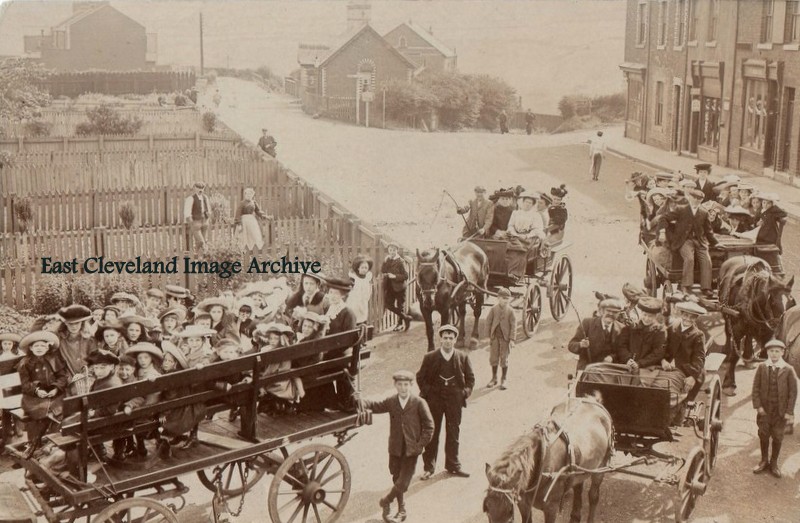 This could possibly be a view of a Sunday School or church outing in Carlin How Square, based upon the style of dress and the numbers of young people in the image. We are told by Derick Pearson: ”This was the Carlin How Wagonette trip in 1909. Some wagons, rulleys or carts as they were called were set up with seats but the others had benches taken from the pub and the Chapel which were then roped to the carts for safety. This would have a big event in those days.” Ned Seagull updates with: “That’s Front Street, which after passing Wesley Terrace and the entrance to the works becomes Mount Pleasant; with the shops on the right and Mill Bank (heading off on the right) in the background.” Image courtesy of Pat Bennison and the Pem Holliday Collection, thanks to Derick Pearson and Ned Seagull for the updates. 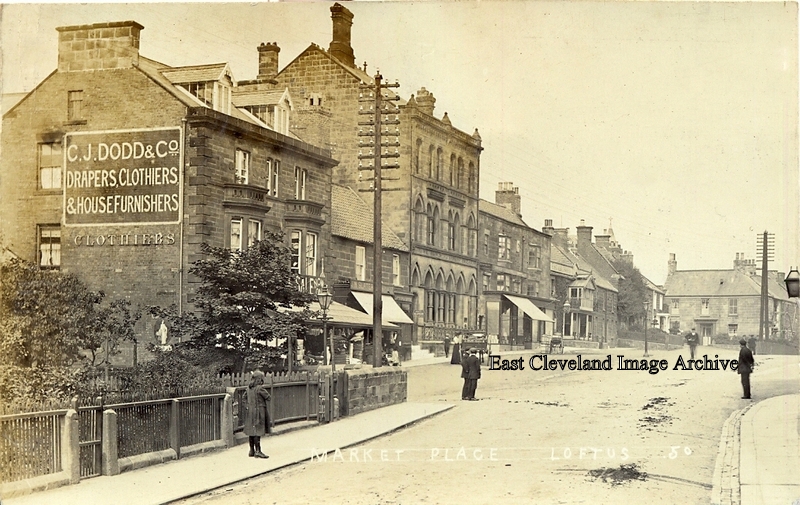 Loftus Market Place early 20th century; after Messrs Dodds took over from Mackenzie’s ownership of the shop on the corner of North Road. With plenty of free manure for the roses on the highway. Image courtesy Alan Richardson. 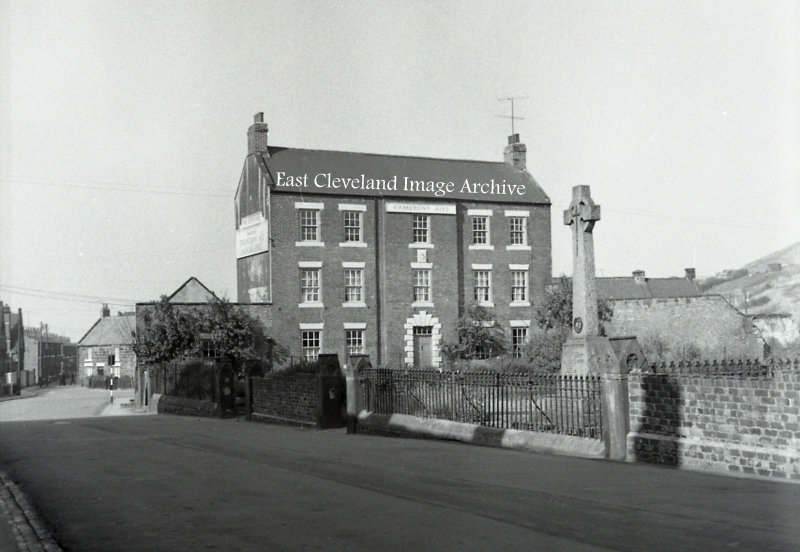 Timms Coffee House, Skinningrove. A grade 2 listed building, built as Skinningrove Hall in 1704 to replace the Old Hall of the 1500s (now the Post Office) for the Easterby family. The Maynard family developed it as a hotel in the 1800s and named it Timms Coffee House after the coffee houses then popular in London. Karen Houdek tells us: ”The family owners leased the building to Martha Allinson, who transferred her ale license for the Buck Inn to the Skinningrove Hall building in 1875. She and her husband George were proprietors of Timm’s Coffee House and Public House, in a different building in the 1861 census. By the 1871 census their business was called the Buck’s Hotel. Martha ran the business solely when George died in 1872. In September of 1875 her application to Magistrates to transfer her license from the Buck Inn to Skinningrove Old Hall was granted. The business was turned over to Martha and George’s son John sometime b/t the 1881 census and 1890, as listed in the 1890 Kelly’s Directory. Per the 1891 census Martha has moved to Linthorpe, Middlesbrough, North Yorkshire with her son William, and eventually dies in Middlesbrough in 1908. (An interesting little tidbit about the ties of the two families is found in the 1871 census, in which Martha and George’s daughter Margaret was employed as a servant for the Maynard family.) John dies in April of 1890, and his wife Sarah runs the establishment until her death in August of 1901. The 1911 census shows George Hall as the proprietor. The Halls are loosely connected to the Allinsons through marriage, with David Hall (George’s uncle), b. 1852 being married to John Allinson’s sister Ann Elizabeth, b. 1851.” Joanne Nelson advises: “Jack Shepherdson was my mothers Carolyn Susan Shepherdson and my Uncle, John William Shepherdsons’ father. He later married Jill Wheatleys Gran when my Grandma Winnifred and Jack divorced following the war. Jack was in the Green Howards and fought a long and hard war part of which was liberating Bergen Belsen in Germany. Prior to this he was a professional cricketer who was encouraged by Lord Cayleigh, Brompton to go over the hills to play professionally at Normanby Hall. He took lodgings with my Great, Great Gran and fell in love with Winnifred Morgan Grange, my Grandma. I visited Timms coffee house as a child.” Jill Wheatley tells us ” My gran and grandad – John (Jack) Shepherd – used to own Timms fro 1959 to 1975. I have many great memories of staying at Timm’s from a baby till I was in my teens. Gran and Jack then moved into the village and we would keep in close contact with them. Visiting them very often. Timm’s Coffee House still exists in bricks and mortar but the name has been changed.” Image courtesy of Ken Loughran from a photograph taken in June 1964, many thanks to Karen Houdek, Jill Wheatley and Joanne Nelson for the updates. 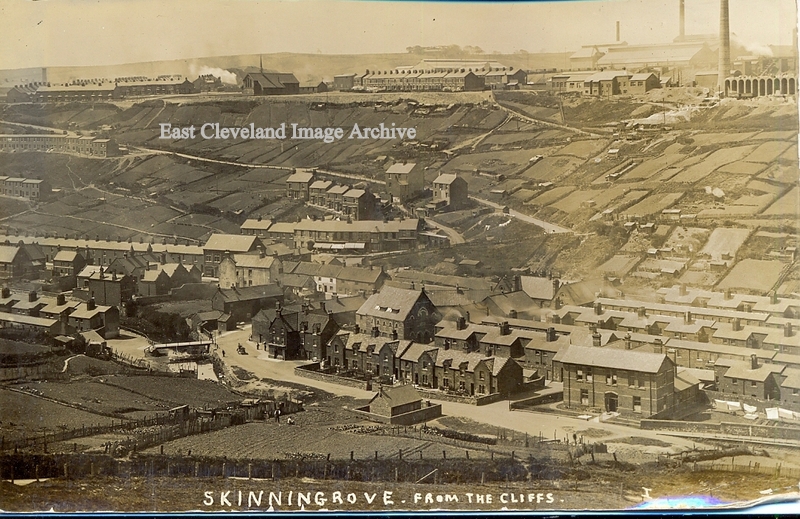 A pre Great War postcard view of Skinningrove Valley. The Miner’s Hospital is prominent at the bottom right. Postcard courtesy Alan Richardson. 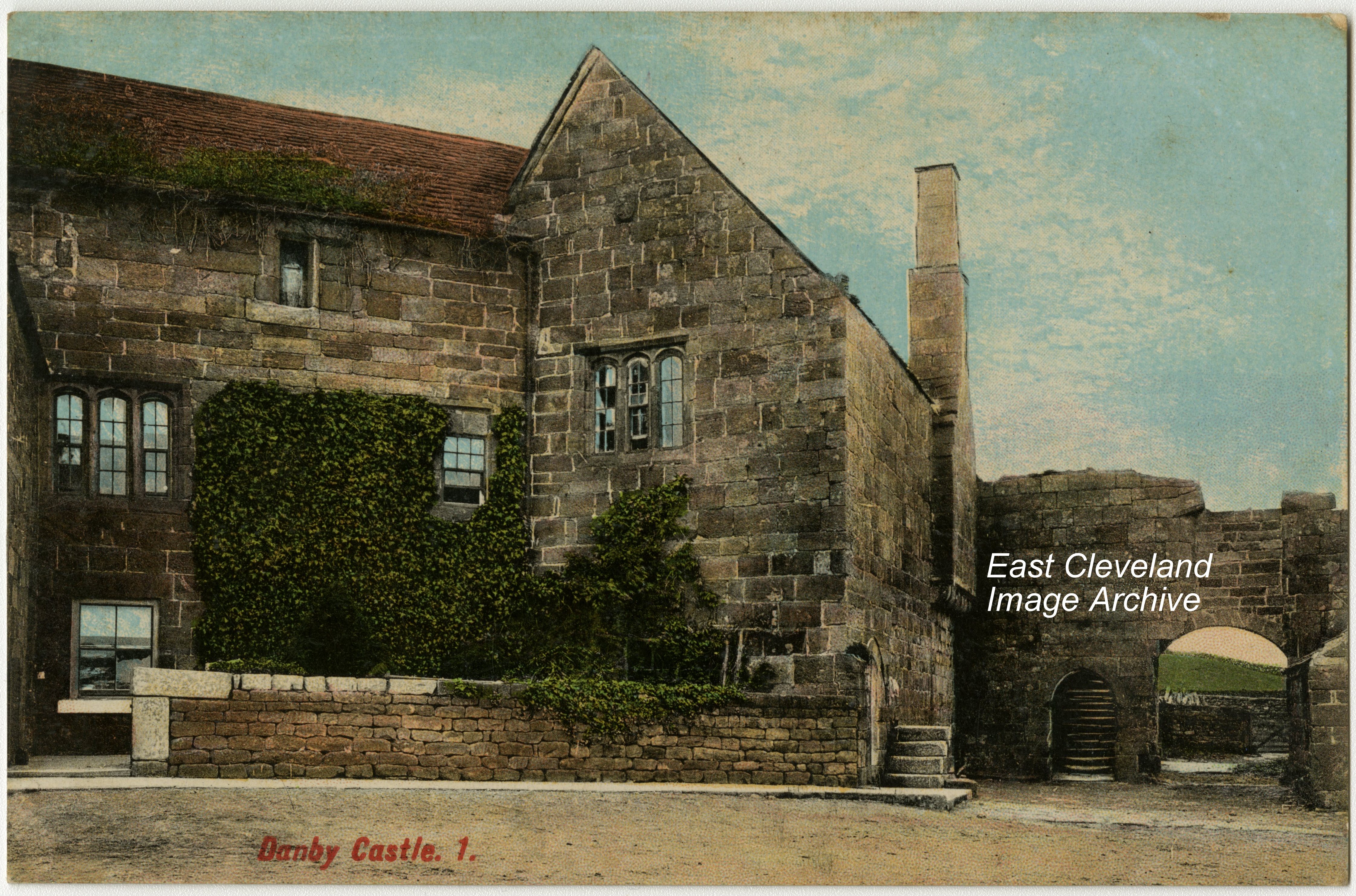 Dating from around 1270, Danby Castle was more a fortified manor house than a castle. Much of the building has disappeared over the years. Lords of the Manor were De Brus, De Thweng, and the Latimer familys. One interesting resident was Katherine Parr, after her second husband Lord John Latimer died, she married King Henry the VIII and survived the experience. Postcard courtesy of Pat Bennison. 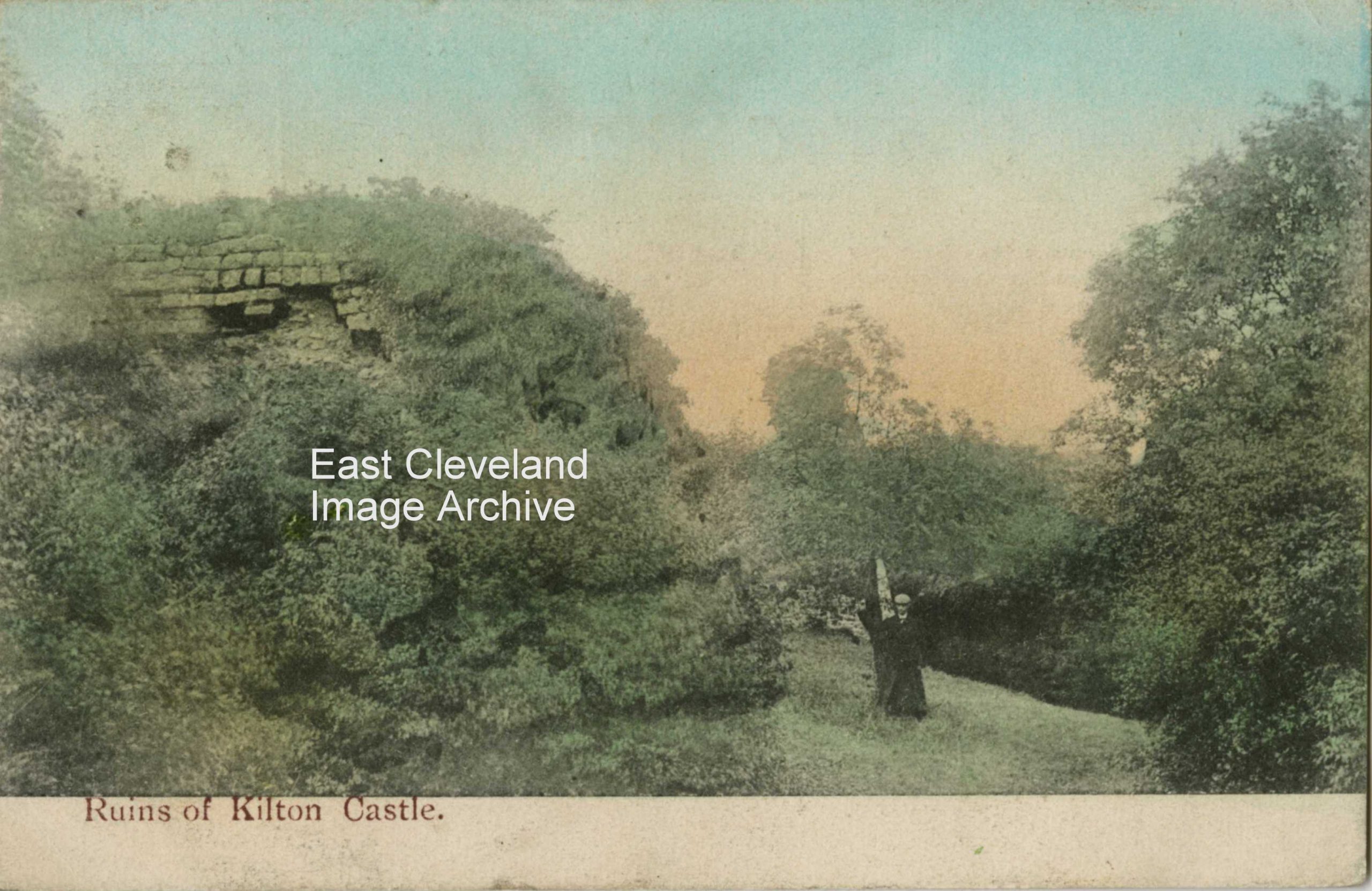 Another hand-tinted picture postcard, and although of unknown production one of the copies viewed is clearly postmarked 1902. Not so much the castle but the ruins of what must have been a beautiful castle. Today it is difficult to find in the undergrowth with brambles and nettles covering what remains, whilst the whole site is shrouded by trees. |
||
Recent Comments